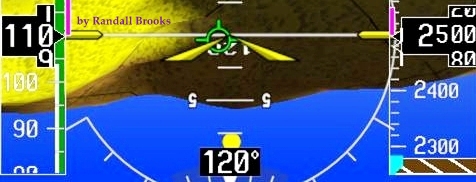I was talking with another pilot regarding the general state of airmanship in the piloting profession. It brought to mind the distinction between the pilots we think we are, versus the skills we actually possess.
Loss of Control In-flight (LOC-I) clearly sits on the top rung on the ladder when it comes to fatal accident causes. Across the board in airline, corporate, and general aviation, more people die from pilots losing control of an aircraft in flight than from any other single cause. Yet LOC-I remains a relatively invisible threat that most pilots do not appreciate.
A large international corporation that comes to Aviation Performance Solutions for Upset Prevention and Recovery Training (UPRT) recently evaluated the safety hazards affecting its flight operation. One executive questioned the expense of UPRT under the assumption that mid-air collisions posed a greater threat. This company’s flight operations involve hundreds of aircraft worldwide and had experienced two mid-airs in the previous year. As harrowing as a mid-air collision is, there had been no fatalities associated with these two. However, during the same period, the organization experienced five fatalities due to LOC-I.
The problem is that unlike the persistent presence of the mid-air threat, the rare yet catastrophic nature of LOC-I means that it may never be appreciated until it suddenly appears in the form of a fatal upset accident. Why is this?
One reason is we are highly unlikely to lose control in the region of the flight envelope in which we normally fly. Proficiency within the normal flight regime gives no hint at what lies beyond the boundaries of our everyday operations. But in those regions beyond the threshold of an in-flight airplane upset, situations can escalate amazingly quickly into aerodynamic regions and behaviors that are not at all common to flight within the normal envelope. These situations require quick responses, but to the pilot unfamiliar with the all-attitude/all-envelope domain, reactions will become slower rather than faster. The brain is called upon to process confusing information in an unfamiliar environment. Accident statistics provide evidence of this cognitive impairment that can accompany a LOC-I accident.
This author participated in a study that was published through the American Institute of Aeronautics and Astronautics (AIAA) in 2012. Titled “Unexpected Pilot Performance Contributing to Loss of Control in Flight (LOC-I)”, the analysis focused on fatal airline LOC-I accidents worldwide from 2001to 2010. Among the four factors evaluated was whether or not the pilots acted in a reliable and predictable manner when confronted with an unexpected airplane upset event.
In a startling finding, all 16 accidents for which data was available revealed that the pilots reacted in a way contrary to how common training practices should have prepared them to react. This does not indicate a few pilots with weak skill sets. Rather, it suggests a systemic deficiency in the way today’s training prepares pilots to react to unanticipated airplane upsets.
It is important to note that the knowledge, skills, and abilities of pilots in the normal operating envelope are no indicator of success in safely or effectively navigating the unfamiliarity of an airplane upset event.
Because there is little time or opportunity for creative thought beyond a certain threshold of upset escalation, the only way to mitigate this rare but potentially catastrophic situation is through pre-emptive, comprehensive UPRT. This is why the International Civil Aviation Organization (ICAO) is calling for the amendment of pilot licensing standards to include on-aircraft UPRT for all pilots, worldwide, prior to Commercial Licensing. The European Aviation Safety Agency (EASA) is fast-tracking this proposal and hopes to have a requirement for UPRT in place next year.
When implemented in the future, the requirement for universal UPRT prior to receiving a Commercial Pilot certificate will ensure that in the face of an airplane upset event all pilots should possess the skills needed to execute recovery when the threshold for prevention has been exceeded.
Randall Brooks
Aviation Performance Solutions


